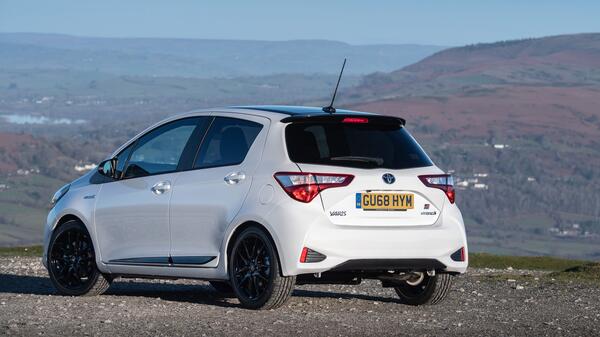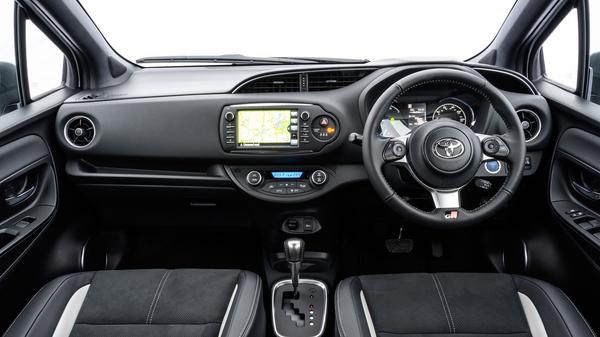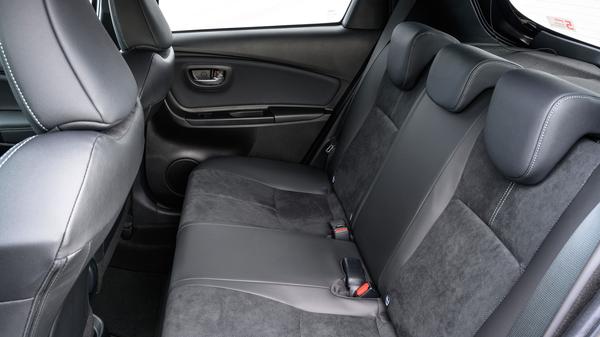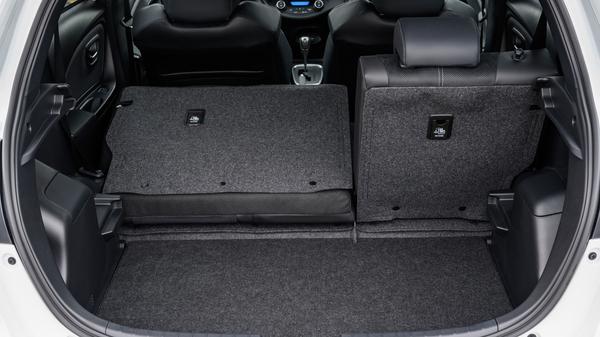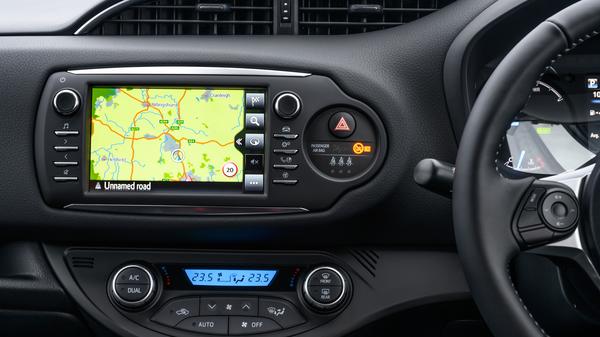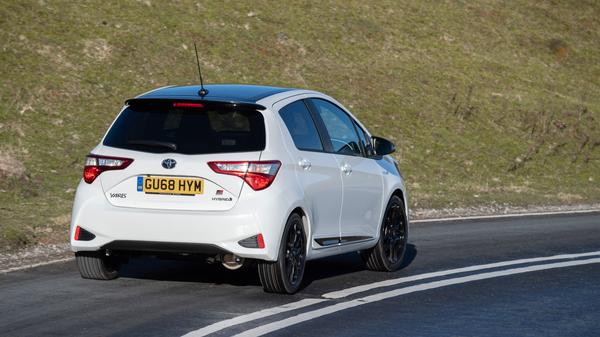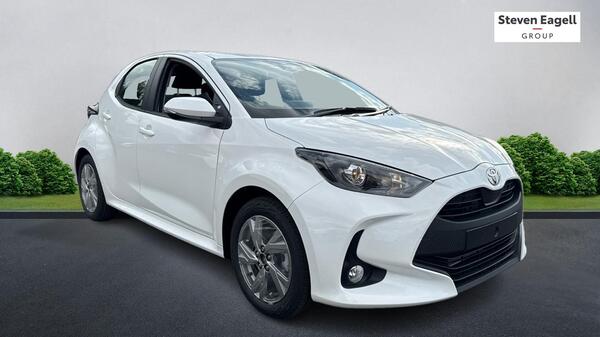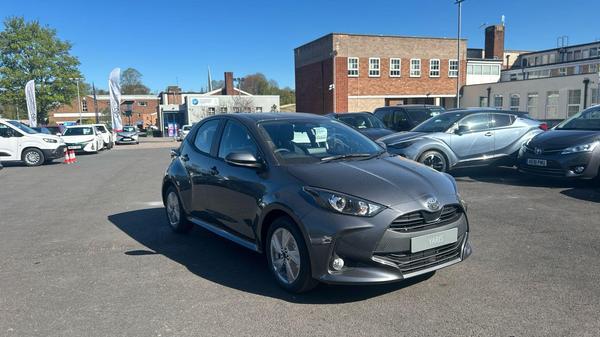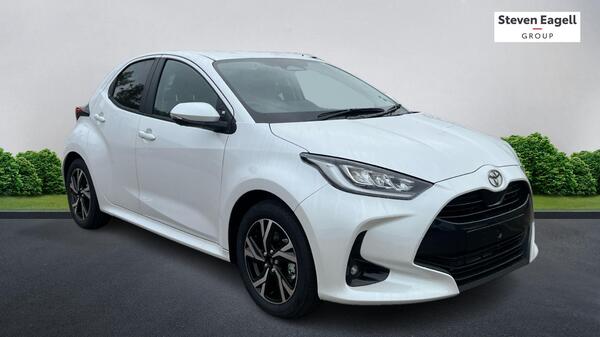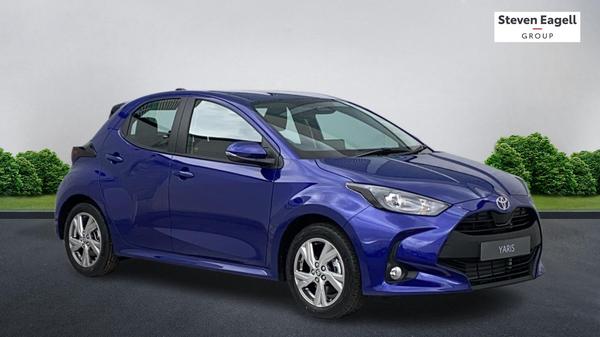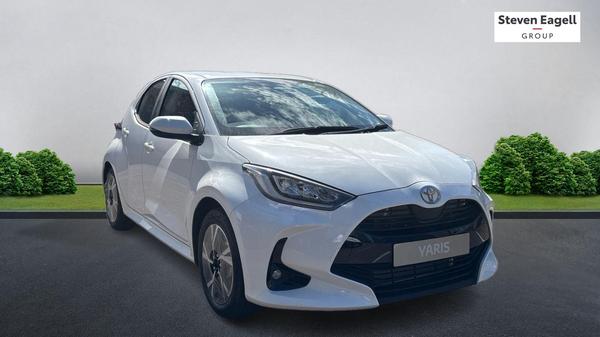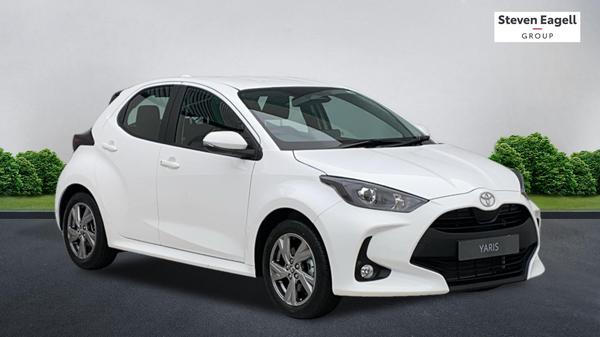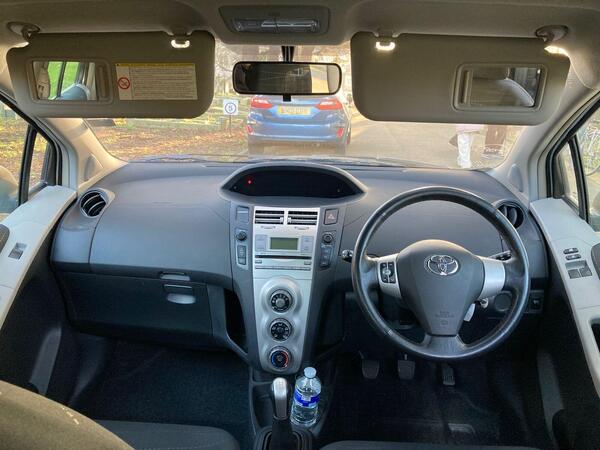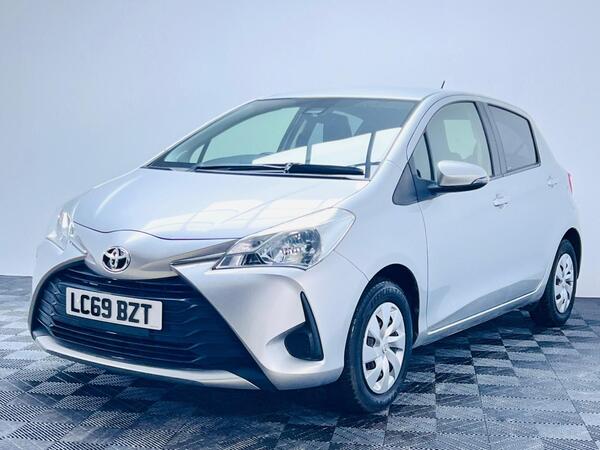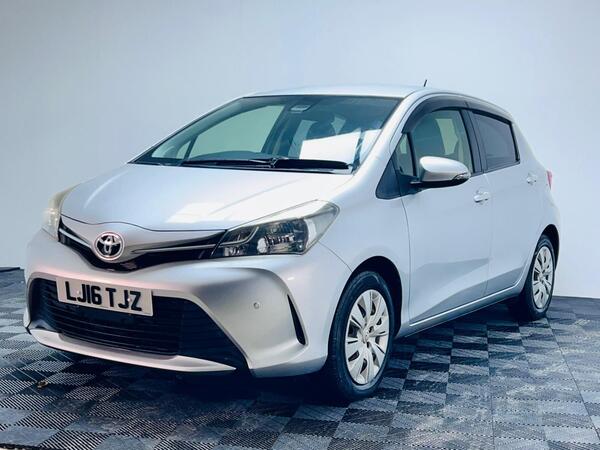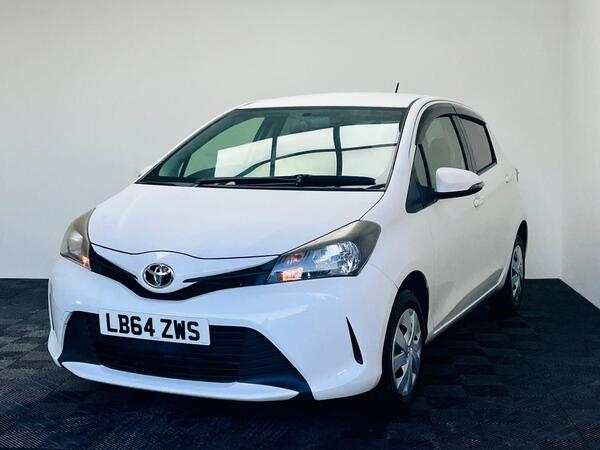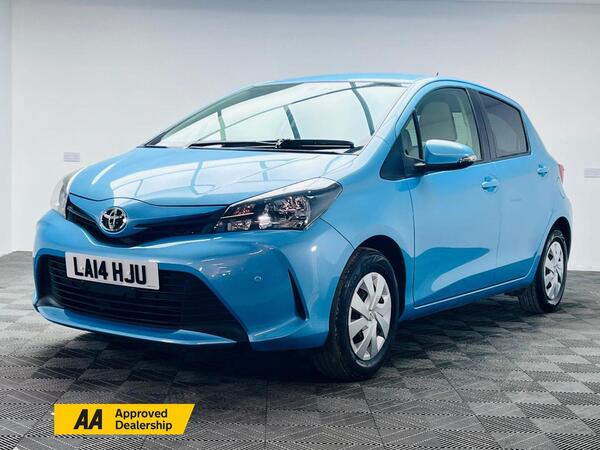This version of the Toyota Yaris has upgraded tech and a few revised upholstery choices compared with earlier models, but the overall cabin hasn’t changed a great deal. While it’s perfectly functional, it doesn’t offer much in the way of quality or style. However, while the plastics feel cheap, they are at least screwed together well. All models get a 4.2-inch colour screen between the rev counter and speedometer, which is both stylish and useful, allowing you to flick between different nuggets of information. It’s particularly handy as the infotainment screen in the centre is small and rather fiddly to use, and doesn't include
Apple CarPlay or Android Auto. The seats are comfortable, with a wide range of adjustability, but while the steering wheel adjusts for both rake and reach, it doesn’t pull out far enough to cover all positions.
There’s good headroom, both up front and in the back, so even tall adults will be able to sit comfortably. Two people will fit in the rear easily, but limited shoulder room means cramming three in will be a bit of a squeeze. At least it’ll be easy to get in and out, as Toyota only sells a five-door Yaris, after discontinuing the three-door model from 2017 onwards. The boot space isn’t enormous – roughly the same as in its competitors – but a false floor that’s level with the opening means there's no lip to lift stuff over, and the space beneath gives extra storage. When you need more space, the rear seats do fold down, but they don’t go completely flat. Storage space in the front of the cabin is reasonable, with door pockets, two cupholders and a shelf-like space for pens above the glovebox. However, the back is poorly catered for, with just a single cupholder and some very small door pockets.
On the road, the Yaris is set up for comfort more than handling excellence, and all models make a pretty good fist of ironing out bumps and poor-quality Tarmac. Toyota is particularly keen to increase sales of its hybrid model and has lavished attention on its chassis, with the result that it’s the most sorted to drive. While riding more firmly than the other models, it’s still comfortable and feels the most stable through the corners. Other variants, particularly the 1.0-litre, are kind to the derriere, but feel soft and less composed through corners. The steering is light, which makes for easy manoeuvring and progress around town, but also means less feeling of control at faster speeds compared to the best-handling rivals, such as
Ford’s Fiesta and the
Volkswagen Polo. Road noise is impressively quiet in all the models we tried, although there’s a fair bit of wind noise at motorway speeds.

